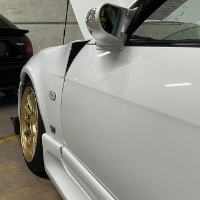R33 Gtr - Turbo's Out, Now What Should I Replace? Pics Attached!
Announcements
-
Similar Content
-
Latest Posts
-
By AIDAN BNR34 · Posted
Recently acquired a White V-spec R34 GTR as a barely rolling shell. Will start adding photos of the work I do and info I come across. Already have found out so much about what parts are interchangeable between other R34 models along with 32/33 GT and GTR's. Car is being built 100% by myself so much to learn from engine, gearbox, transfer, diff, wiring etc. Also after quite a few parts, attesa pump. gaurds, bonnet, axles, dash cluster and a few more, so if someone has stuff hiding away or parting please let me know! -
*yawn*.. To the OP - Just stick a big single, and seqy. #Sorted.
-
Oh damn, I have not switched around any wiring on the harness at all yet. I had my ecu sent off to a tuner to tune for my setup and disable the turbo pressure sensor so there's no more fuel cut. Should I switch the pin around for the ring gear crankshaft position sensor? What types of symptoms would show if something is about to go wrong related to that? thank you
-




Recommended Posts
Create an account or sign in to comment
You need to be a member in order to leave a comment
Create an account
Sign up for a new account in our community. It's easy!
Register a new accountSign in
Already have an account? Sign in here.
Sign In Now